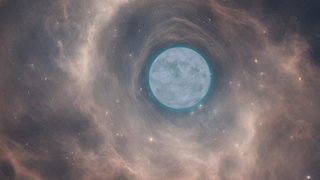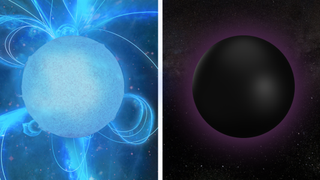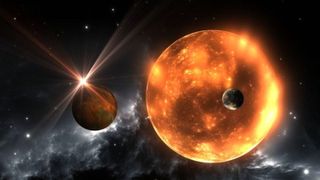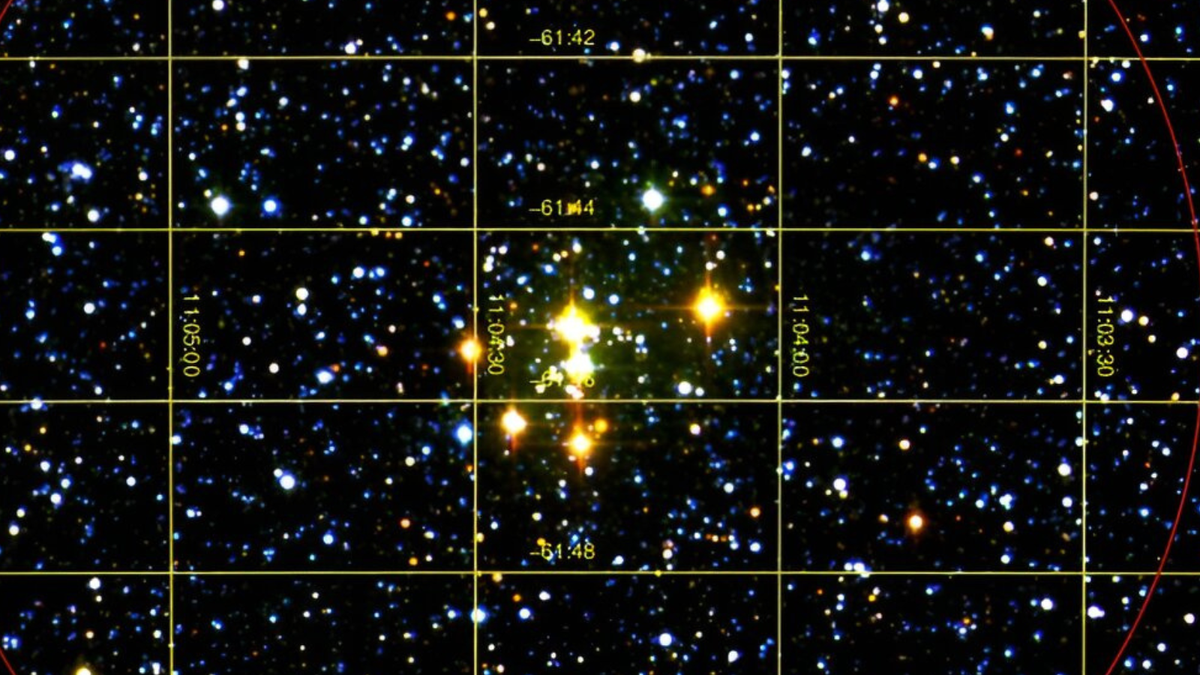In the past, map makers often placed monsters on their maps to mark unexplored regions and potentially dangerous regions. A famous example is the ‘Theatrum Orbis Terrarum’ map, created in 1570, which features sea serpents and other sea monsters.
Fast forward to today , and an unexplored Milky Way star cluster suggests that astronomers should adopt this tradition, too. The cluster is known as Barbá 2 and is found just 24,000 light-years or so away from Earth. An investigation using the star-surveying Gaia space telescope revealed that the Barbá 2 is packed with red supergiant stars, stars that can be hundreds of times wider than the sun and up to 1,000,000 times as luminous as the sun.
“There are many open clusters in the galaxy. However, not all open clusters have the same level of interest to astronomers,” Ignacio Negueruela, a researcher at the Universidad de Alicante who was part of the team behind the discovery of supergiants in Barbá 2, told Space.com. “Clusters rich in red supergiants are very rare and tend to be very far away, but they play a crucial role in understanding key aspects in the evolution of massive stars.”
The intimidating size and power of supergiants means these monster stars burn through their nuclear fuel much faster than stars like the sun. Whereas our star will exist in its main sequence lifetime for around 10 billion years, supergiants are estimated to last just a few million years.
The short lifetime of supergiants means that while open clusters like Barbá 2 are common, with over 1,100 already discovered in the Milky Way alone, finding one packed with red supergiants is extremely rare.
Related: How are extreme “blue supergiant” stars born? Astronomers may finally know
Negueruela added that the study of open clusters like Barbá 2 that are rich in monster-sized stars could be important in discovering how they become red supergiants or fail to do so and how this influences their ultimate fate.
“In the Milky Way, there are only a handful of clusters rich in red supergiants,” he said. “Finding a cluster like Barbá 2, which can be observed with a mid-sized telescope, is a significant and exciting discovery for astronomers. Being so far away and affected by moderate extinction, the cluster does not look like much in optical images.”
Barbá 2 was actually discovered around a decade ago by astronomer Rodolfo Barbá, but after he passed away in 2021, the discovery has not been published until now. Hence, it is only fitting the cluster that now carries his name.
“Rodolfo was well-known among his peers for being slow to publish. He made many significant discoveries that he shared at meetings or discussed with colleagues but often didn’t get around to publishing,” Negueruela said. “After Rodolfo passed away, his close collaborator Jesús Maíz took on the task of ensuring that his work would be published.”
Nothing lasts forever, and that’s certainly true even for the most monstrous of stars, but just as is the case with distinguished scientists like Barbá, what is left behind is of vital importance.
Red supergiant legacy: Black hole or neutron star?
Though stellar bodies of all sizes have lifetimes that make ours look truly insignificant in terms of duration, these stellar lives still grind to a halt when stars exhaust the fuel for nuclear fusion in their cores.
The life of any star is a delicate balancing act between the outward force of radiation pressure generated by nuclear fusion in its cores and the inward push of its own gravity. Whether this battle rages for millions or billions of years, gravity inevitably wins, but the outcomes of this victory vary.
For instance, stars with sizes similar to the sun give up their war with gravity when they exhaust the supplies of hydrogen in their cores and can’t continue to convert it to helium.
The gravitational collapse of these smaller-sized stars creates a stellar remnant called a white dwarf, which is prevented from further collapse by a quantum phenomenon called “electron degeneracy pressure,” which essentially stops electrons from all occupying the same state.

If a star begins this process while at least eight times the mass of the sun and can hang on to at least 1.44 times of the sun’s mass during its initial collapse (the so-called Chandrasekhar limit), when it collapses it can generate enough pressure in its core to fuse helium to heavier elements, giving the star a new bout of life.
When helium is exhausted, this process repeats; the star collapses again and again, fusing heavier and heavier elements until the massive star has a core of iron, an element that no star can fuse to heavier elements. The star undergoes a final collapse, triggering a massive supernova explosion that blows away its outer layers. But, there are two possible outcomes of this collapse.
The crushing down of the massive stellar core forces together electrons and protons to create a neutron star, a stellar remnant filled with a sea of neutrons, neutral particles that normally exist in the nuclei of atoms with protons. Further collapse is prevented by “neutron degeneracy pressure,” the pressure each neutron exerts on surrounding neutrons, but again this can be overcome if a star has enough mass.
Should complete collapse occur, the star is transformed into a stellar-mass black hole, a region of space with a mass so dense at its center that there is a boundary around it from which not even light travels fast enough to escape, the so-called “event horizon.”

The dividing line to overcome neutron degeneracy pressure is called the Tolman–Oppenheimer–Volkoff limit, and it is believed to exist between 2.2 and 2.9 times the mass of the sun. This means it isn’t as well defined as the Chandrasekhar limit, and scientists would like to pin this dividing line down with more certainty.
Open clusters packed with red supergiants that could undergo such transformations could be the ideal lab for exploring the ins and outs of the creation of neutron stars or black holes and studying why a star takes one path and not the other.
“Clusters dominated by red supergiants are expected to be young open clusters with a hefty collection of stars. They give us information about the properties of red supergiants,” Negueruela explained. “These clusters are valuable to astronomers because they help us understand red supergiants, which are otherwise challenging to study on their own.”
Supercluster is super-puzzling
Negueruela continued by explaining that isolated red supergiants are difficult to characterize accurately because their distances from us are often uncertain, and it’s hard to determine basic properties such as their mass and age.
“This is because red supergiants with different intrinsic properties can appear very similar at different stages of their lives,” he added.
The stars in open clusters are all believed to have formed at the same time from the same collapsing cloud of gas and dust. This means astronomers can determine the cluster’s age and then compare the properties of the older red supergiants in the clusters to those of the younger blue stars in the cluster.
“The masses of these blue stars are much easier to figure out, which helps us learn more about the red supergiants,” Negueruela said. “Our models suggest that the number of red supergiants is directly linked to the cluster’s mass.”
That means astronomers expect to see about five supergiants for every ten thousand solar masses. Negueruela pointed out that there seems to be another factor at play in this that we don’t yet understand.
“We sometimes find clusters with the same age and mass, but one cluster is full of red supergiants, while another has only one or two,” he continued. “There is an element of randomness here since the red supergiant phase in a star’s life is very short, and we’re dealing with low numbers, where small changes can have a big impact.”
The team’s models, which predict five red supergiants for a cluster of a certain mass, also suggest that seeing anywhere from two to eight supergiants in a cluster isn’t unusual. Yet, the team still suspects something else might influence this, with Negueruela suggesting it could be related to how many stars in the cluster are part of binary or multiple-star systems or even the properties of these binaries.

Not only is this a mystery about supergiant-rich clusters that remain to be investigated, but there are a few unexpected issues about the Barbá 2 cluster.
“Firstly, all the known clusters rich in red supergiants are located towards the central regions of the Milky Way, with the exception of NGC 7419,” Negueruela added. “This makes sense because star formation is more intense in the inner galaxy, but it also means that all of them are more difficult to study because of heavy extinction [light-blocking] caused by dust and gas along the line of sight. Barbá 2, on the contrary, is located in a completely different part of the Milky Way, towards the outside.”
The researcher said that another interesting point is the area of the sky that is home to Barbá 2 is very well-researched because it contains many fascinating objects. Thus, the discovery of this supergiant-rich cluster suggests that despite many years of dedicated searches, there are quite a few hidden treasures out there waiting to be discovered.
“I am a bit surprised that no one else has come across Barbá 2,” Negueruela said. “This discovery shows that there’s still room to improve our search methods.”
“Finding one of these clusters is only a first step. To fully exploit their potential as astrophysical laboratories, we must combine stellar models and observation,” Negueruela concluded. “We will try to obtain more spectra to determine with accuracy the age of the cluster and, hence, its total mass.
“Additionally, we hope to learn from this cluster’s properties to refine our techniques for discovering similar clusters in the future.”
The team’s work is published on the paper repository site arXiv.











/https://tf-cmsv2-smithsonianmag-media.s3.amazonaws.com/filer_public/d1/82/d18228f6-d319-4525-bb18-78b829f0791f/mammalevolution_web.jpg)








Discussion about this post